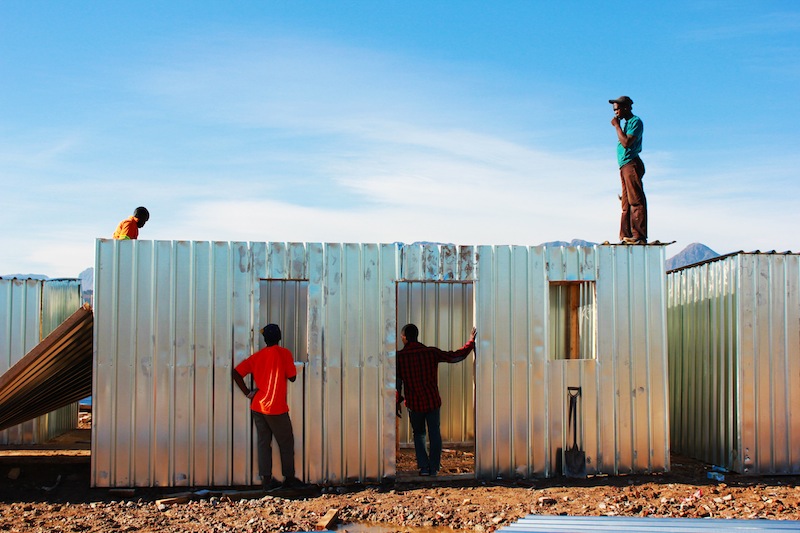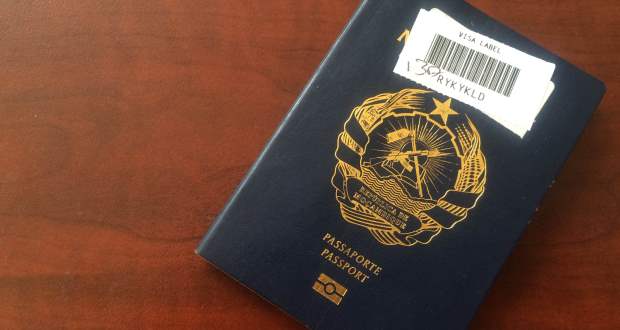A month ago, the eviction site at Nomzamo, near Lwandle in Strand, was a wreck of broken down shacks and displaced people. Over 800 residents were forced into homelessness, the little security they had destroyed. Despite the initial attention paid to the evictions, 30 days on, residents are still homeless.
When I first trudged through the remains of Nomzamo, there was chaos. Shacks had been dismissively razed to the ground, residents were stripped of the decency and dignity enshrined in the constitution. Yesterday I found that contractors had begun rebuilding the homes, but Nomzamo’s residents are still trapped in enforced destitution.
On my last visit to Nomzamo, I spoke to evictees who had been moved into the Nomzamo community hall. Mattresses lined the walls and children chased each other through the centre. As I interviewed a young mother, a group of men trooped through the door, defiantly carrying housing materials they’d snuck away from the site. Residents couldn’t determine how long they would remain at the hall. A month later, they were exactly where I had left them.
I walked into the centre and things were eerily familiar. But there was no defiance. Although people were angry, their restlessness had simmered down, and many of them simply lay on the mattresses. The last words I heard a month ago were “I don’t know what’s going to happenâ€. Yesterday, I heard the same words from the people still living there. Residents know their shacks are being built, but meanwhile they are left waiting in limbo at the community centre. As I left, a mother of four showed me an image on her cellphone. It was a photo of her unfinished shack.
At the demolition site, row upon row of empty, silver corrugated homes gleamed in the sun. Deeper into the location, a worrying number of houses had yet to be built.
Human Settlements minister Lindiwe Sisulu has launched an inquiry into the evictions and her department’s investigations into the matter are set to begin next month. Meanwhile, Nomzamo’s evicted residents have yet to be provided with proper alternative accommodation.
Officials have made several blunders in their attempts to relocate the evicted people. Initially, city officials told residents that land was available in the Macassar settlement near Khayelitsha. But residents of Macassar demanded that their own people be housed before anyone else. The same thing happened in Blackheath, where local residents protested against the housing of evicted people from Nomzamo in their area.
The competition for basic housing in poor communities is being ferociously waged, to the extent that citizens deny one another access.
One resident of Nomzamo told me, “I feel like I am a foreigner, I am not a South African.†The brutality of the evictions and the angry reaction of those in Macassar had wilted his faith in the country.
It is a saddening reminder of the disunity among South Africans. The state has failed to provide many thousands of people with decent housing and this failure has meant many people are fiercely protective of their land to the point where they protest against their shackless neighbours.
The process to find homes for the people of Nomzamo has been slow. Residents have been left to wait for state-appointed contractors to finish their work, given no control over when or how they will be housed, and prevented from rebuilding their own homes. As each week passes, interest in Nomzamo will wane, leaving the evicted people exactly where they were, waiting for a home. Â The housing crisis has become background noise.

![Nomzamo row of shacks [resized]](https://www.thedailyvox.co.za/wp-content/uploads/2014/07/Nomzamo-row-of-shacks-resized.jpg)








